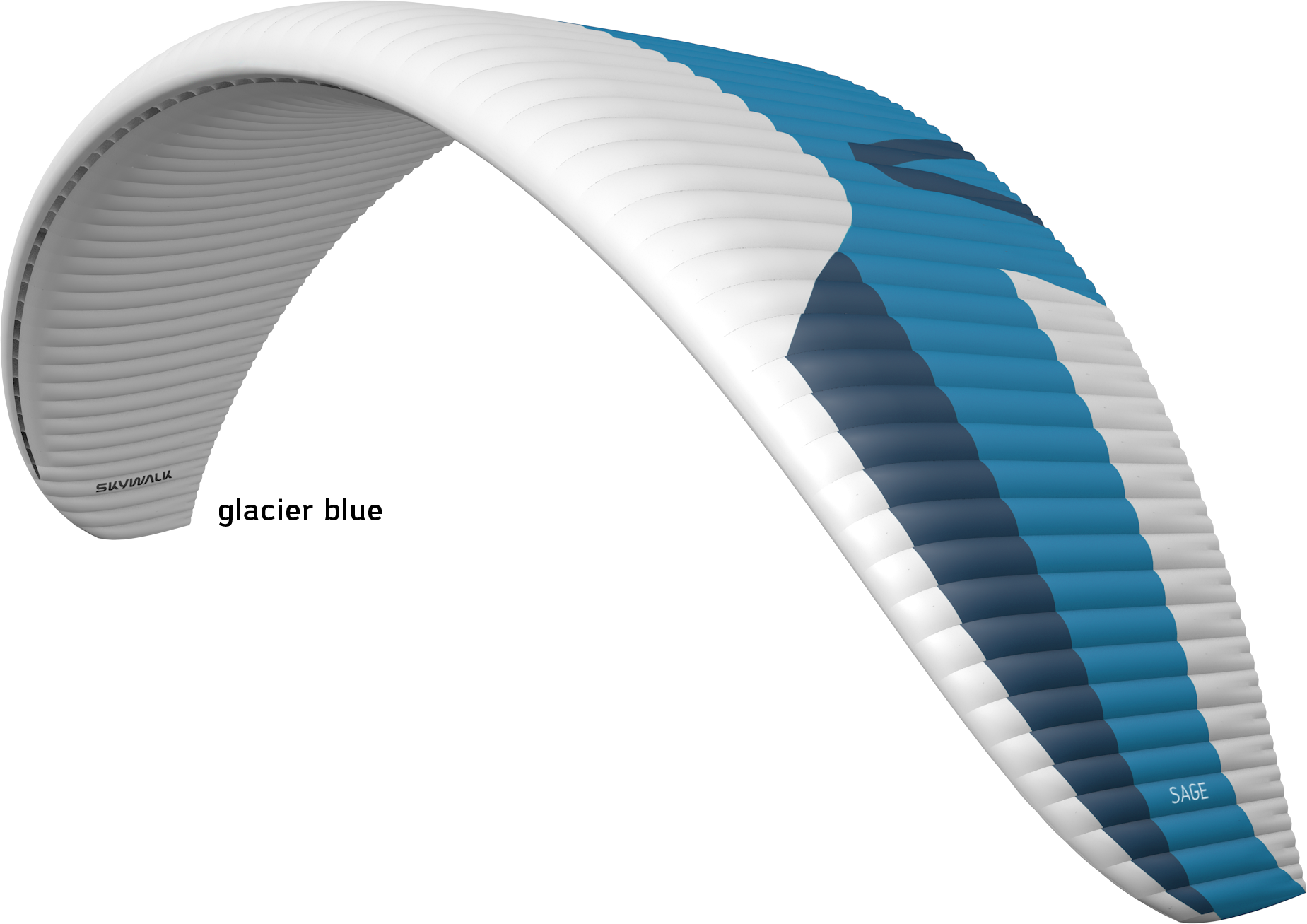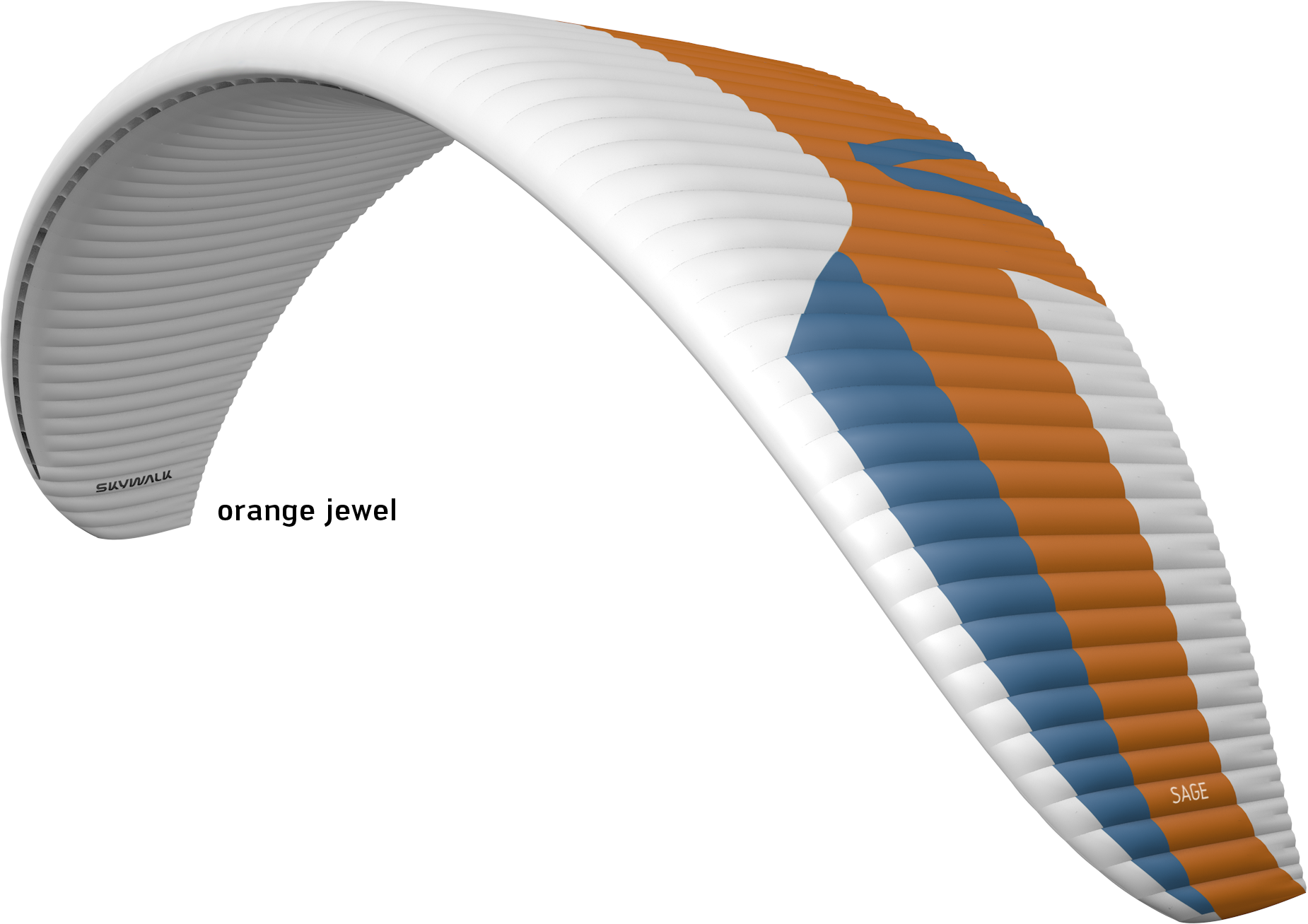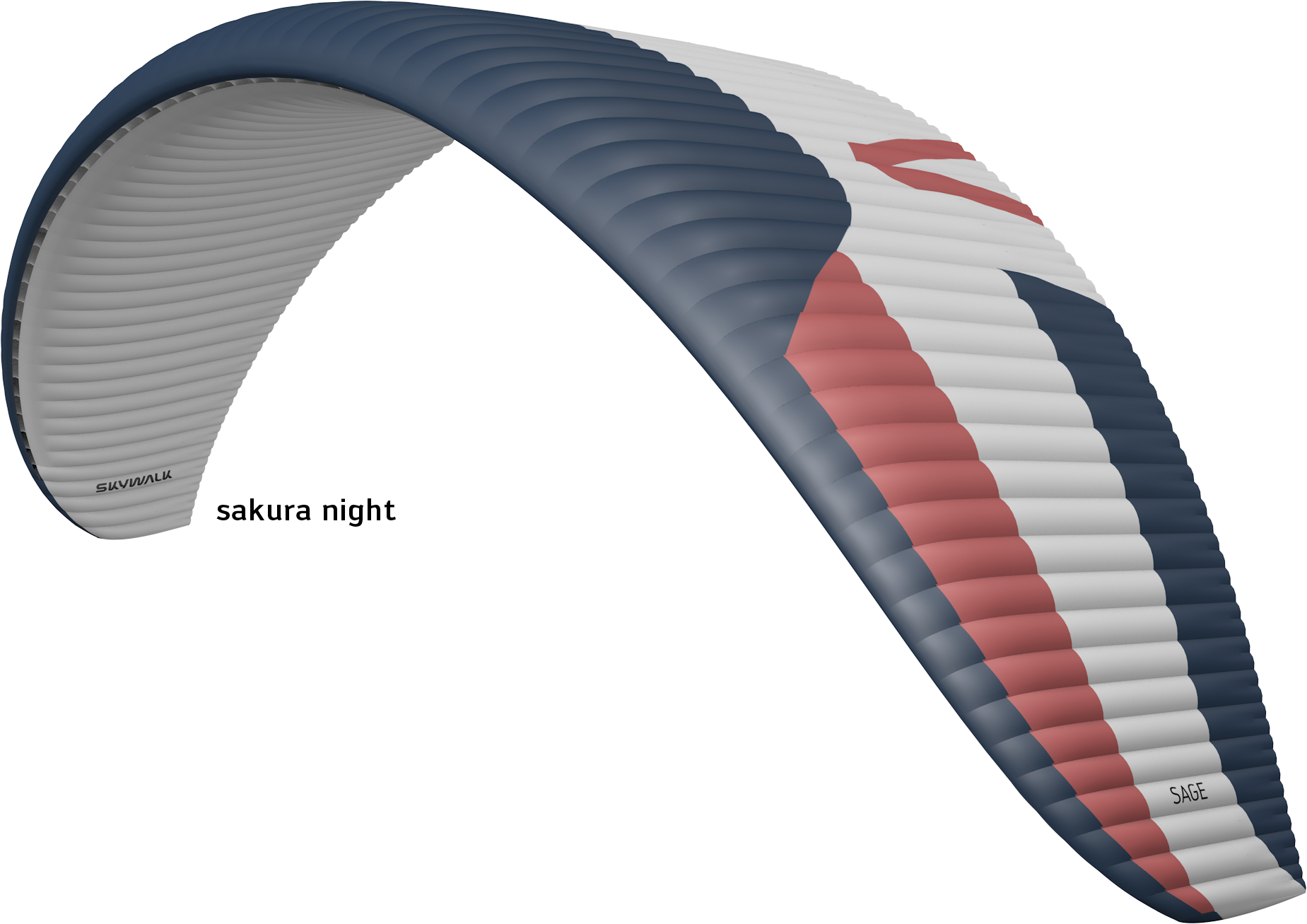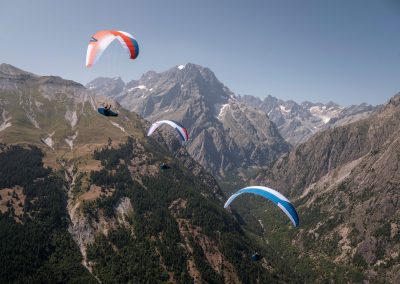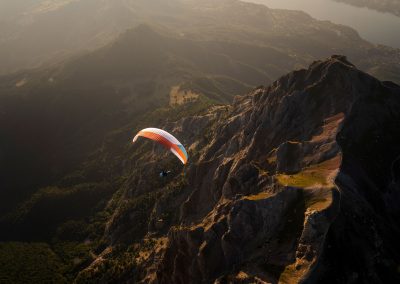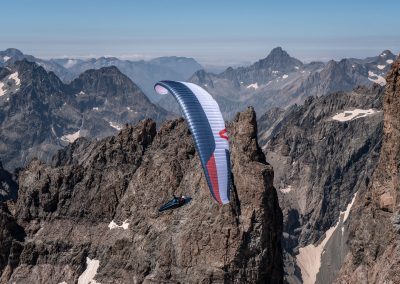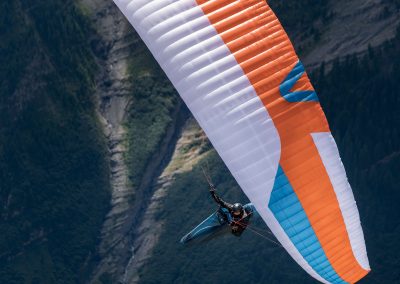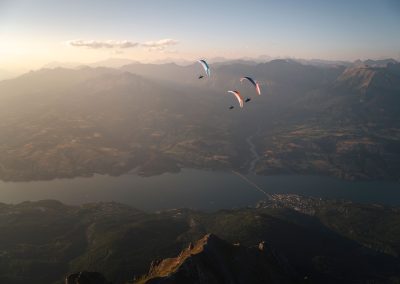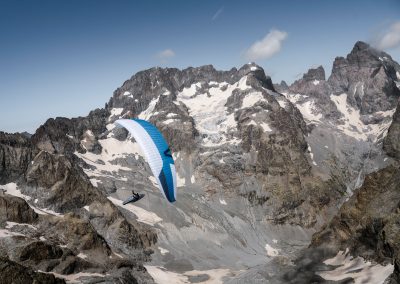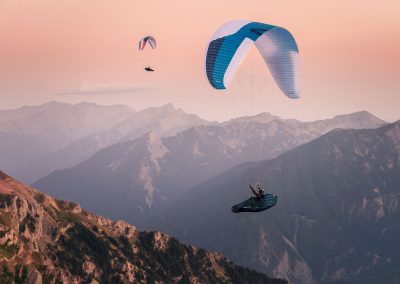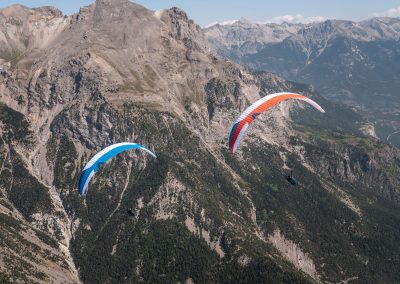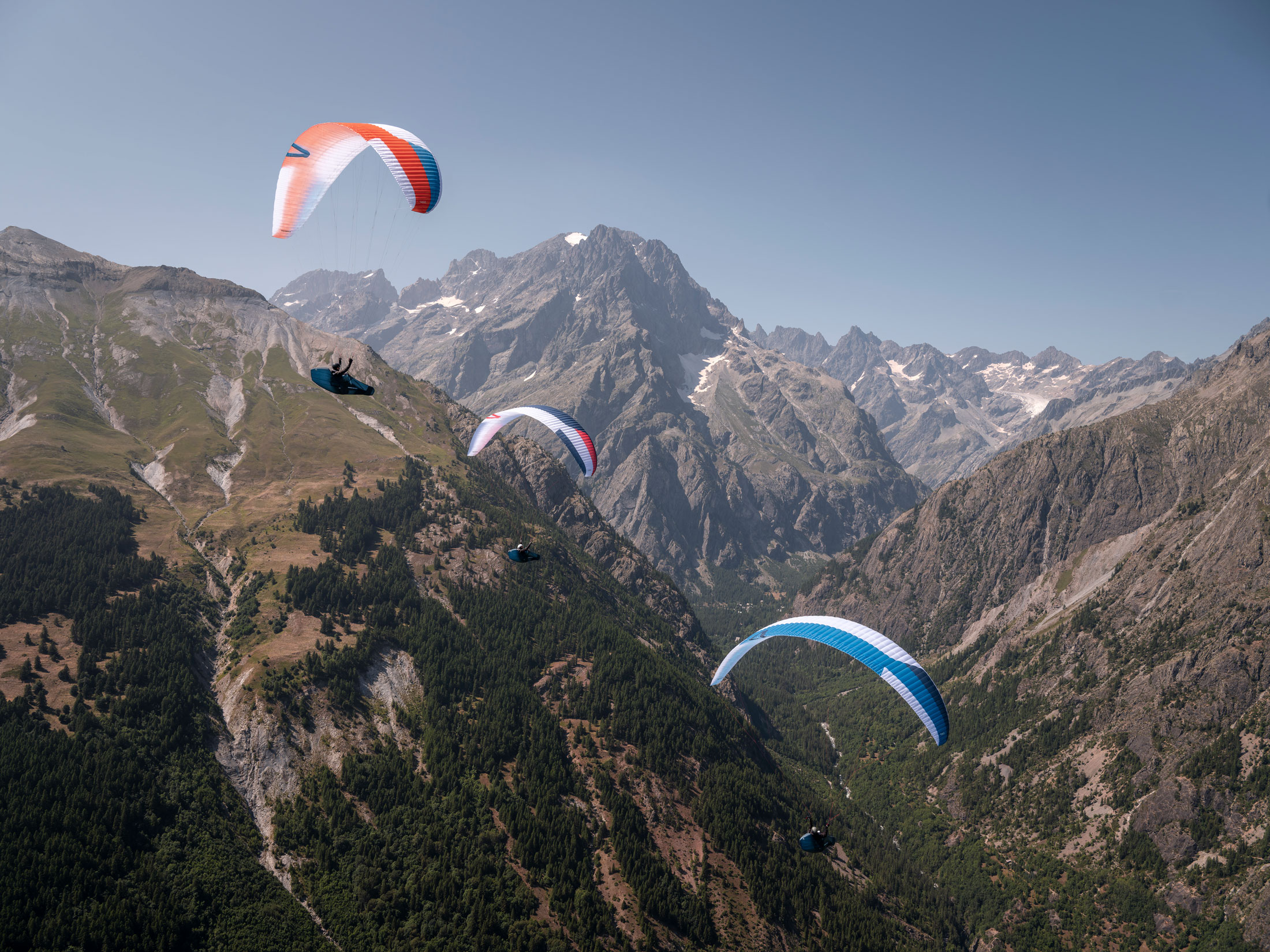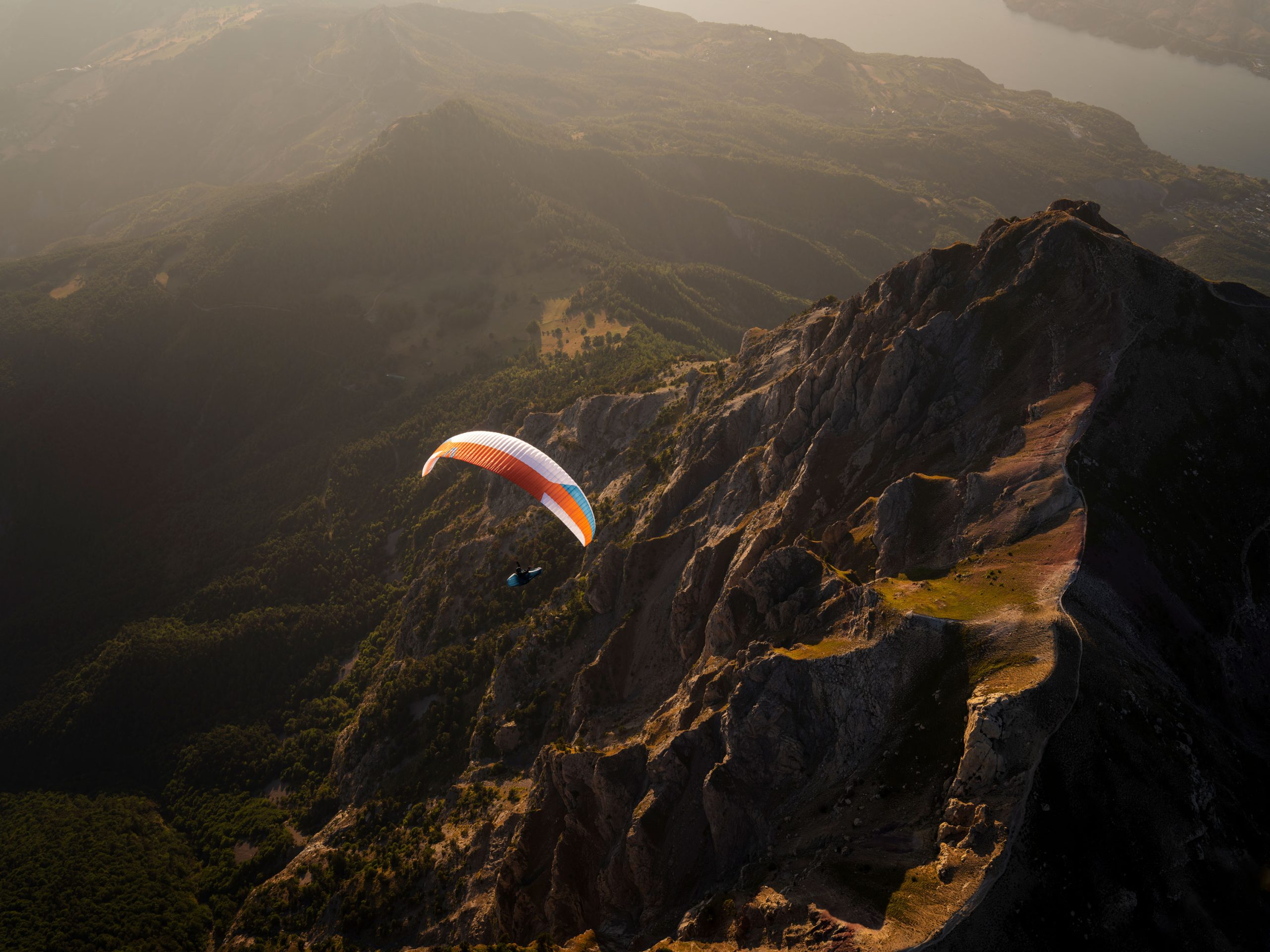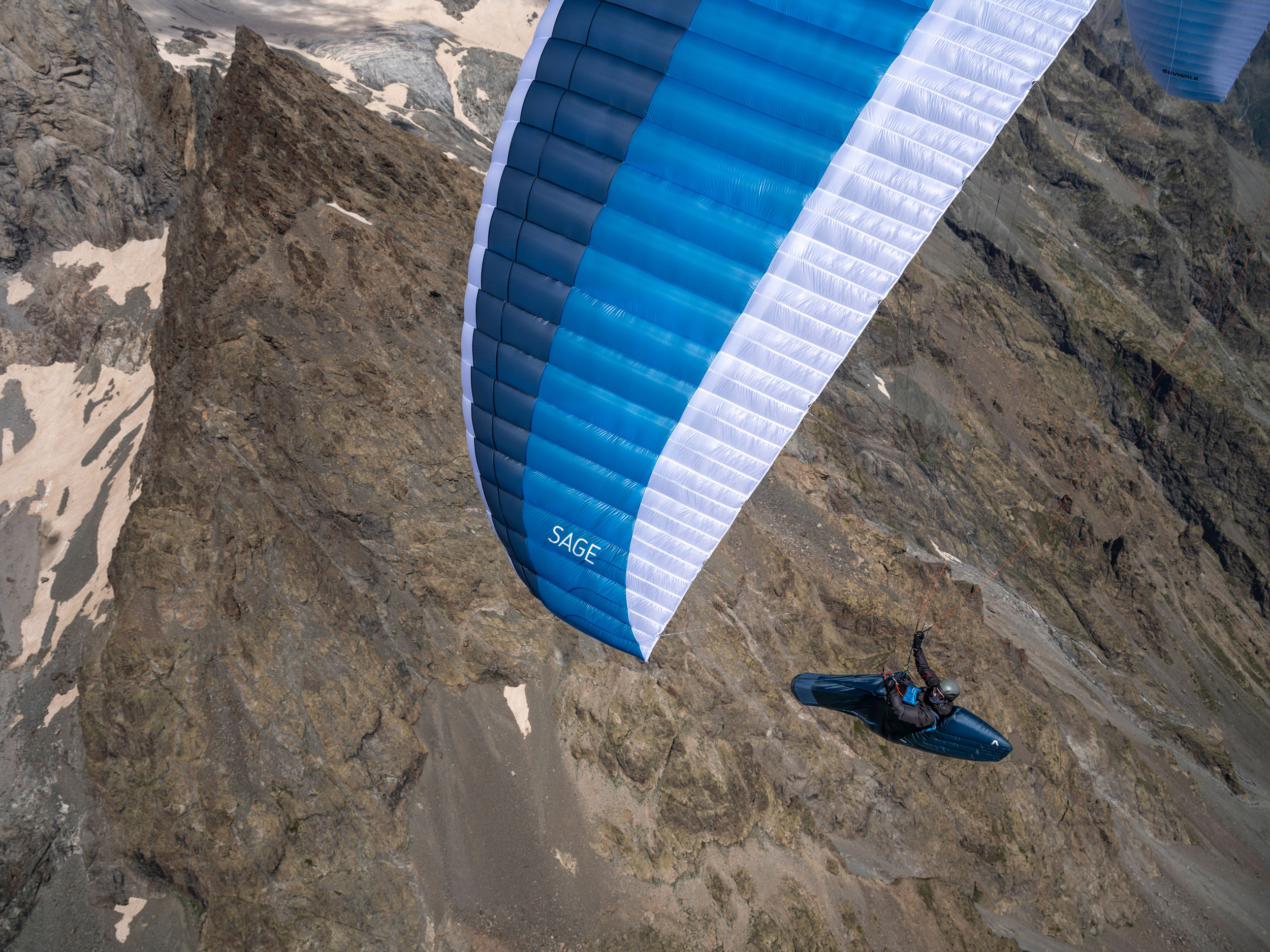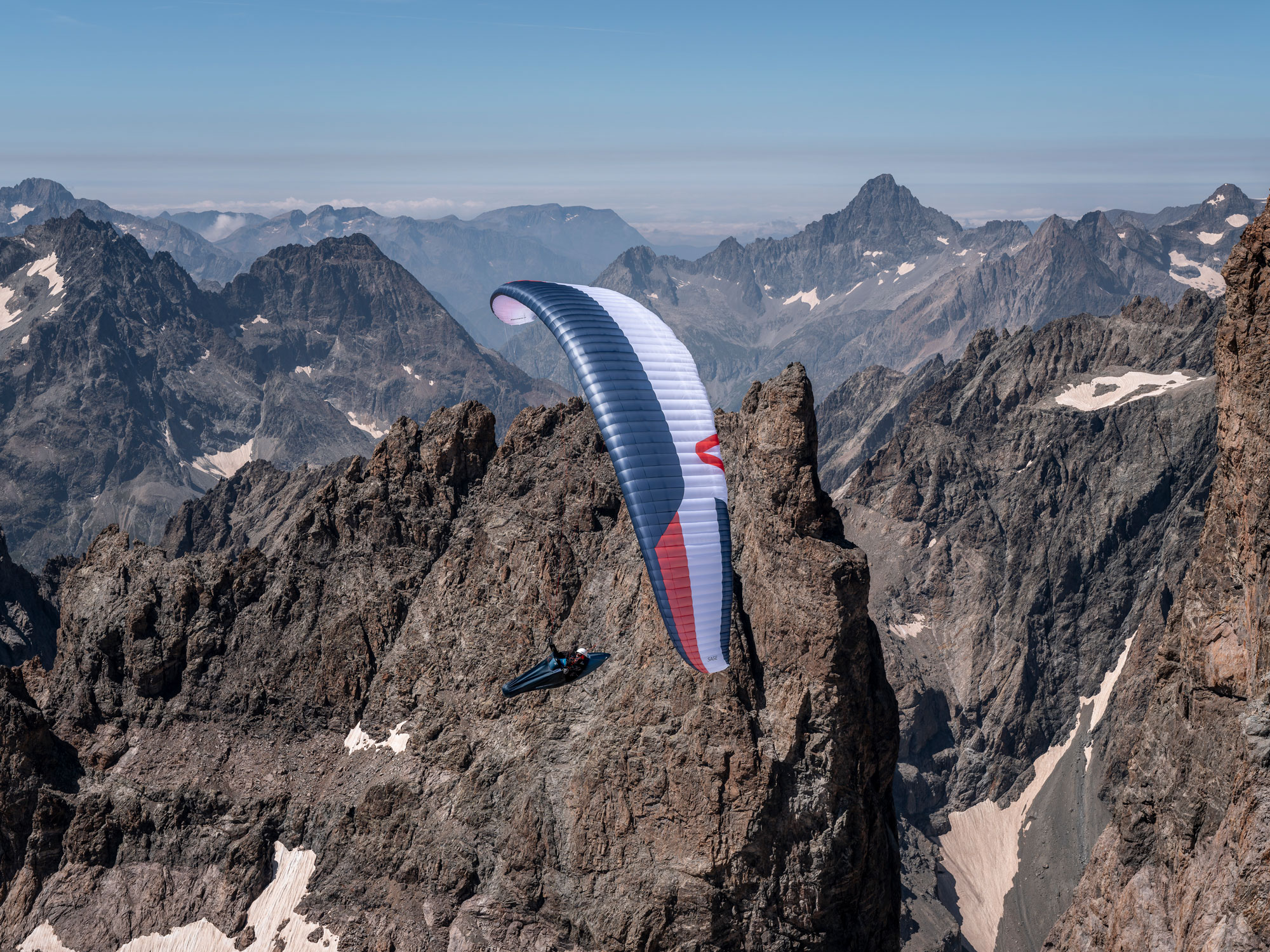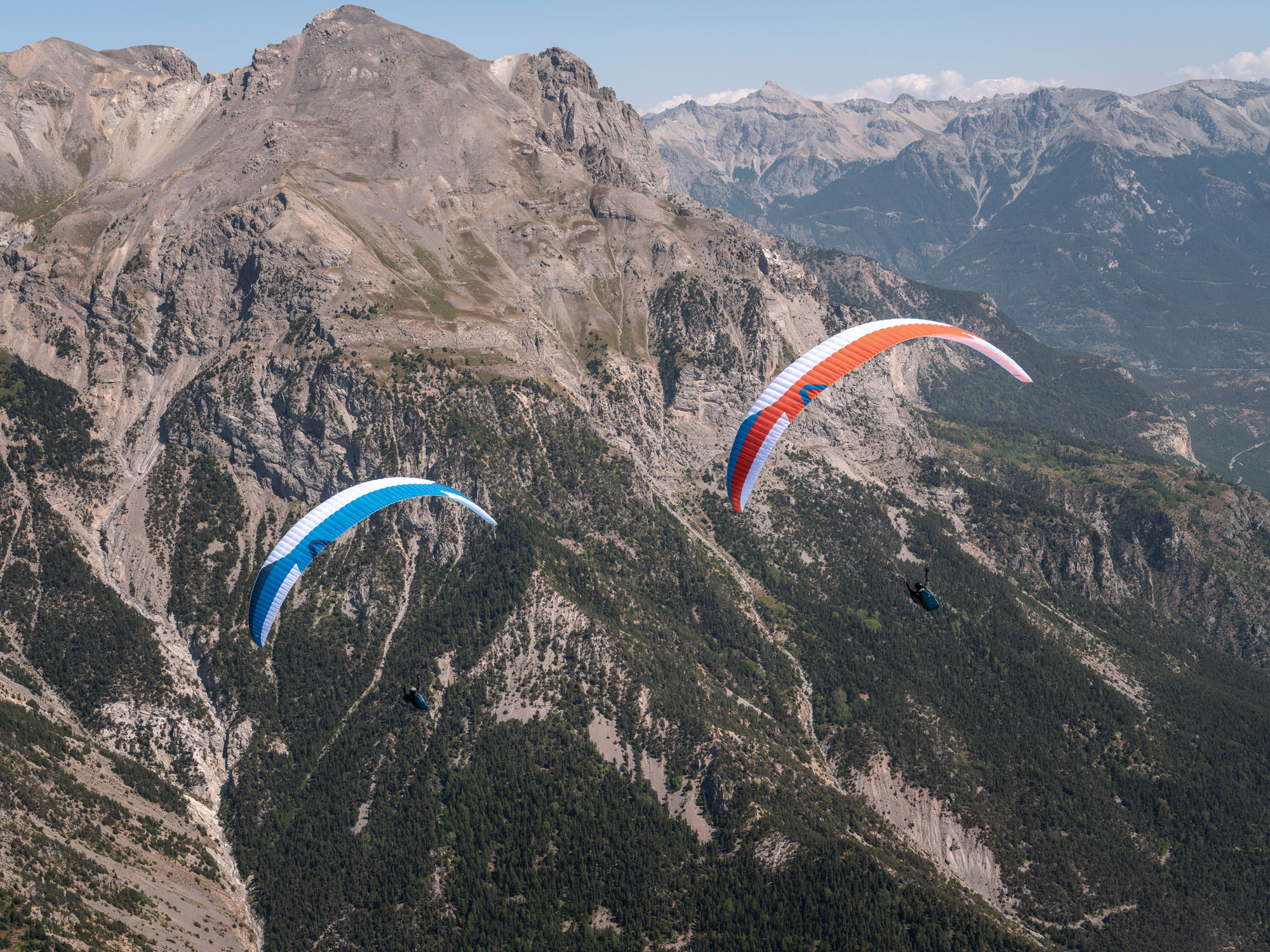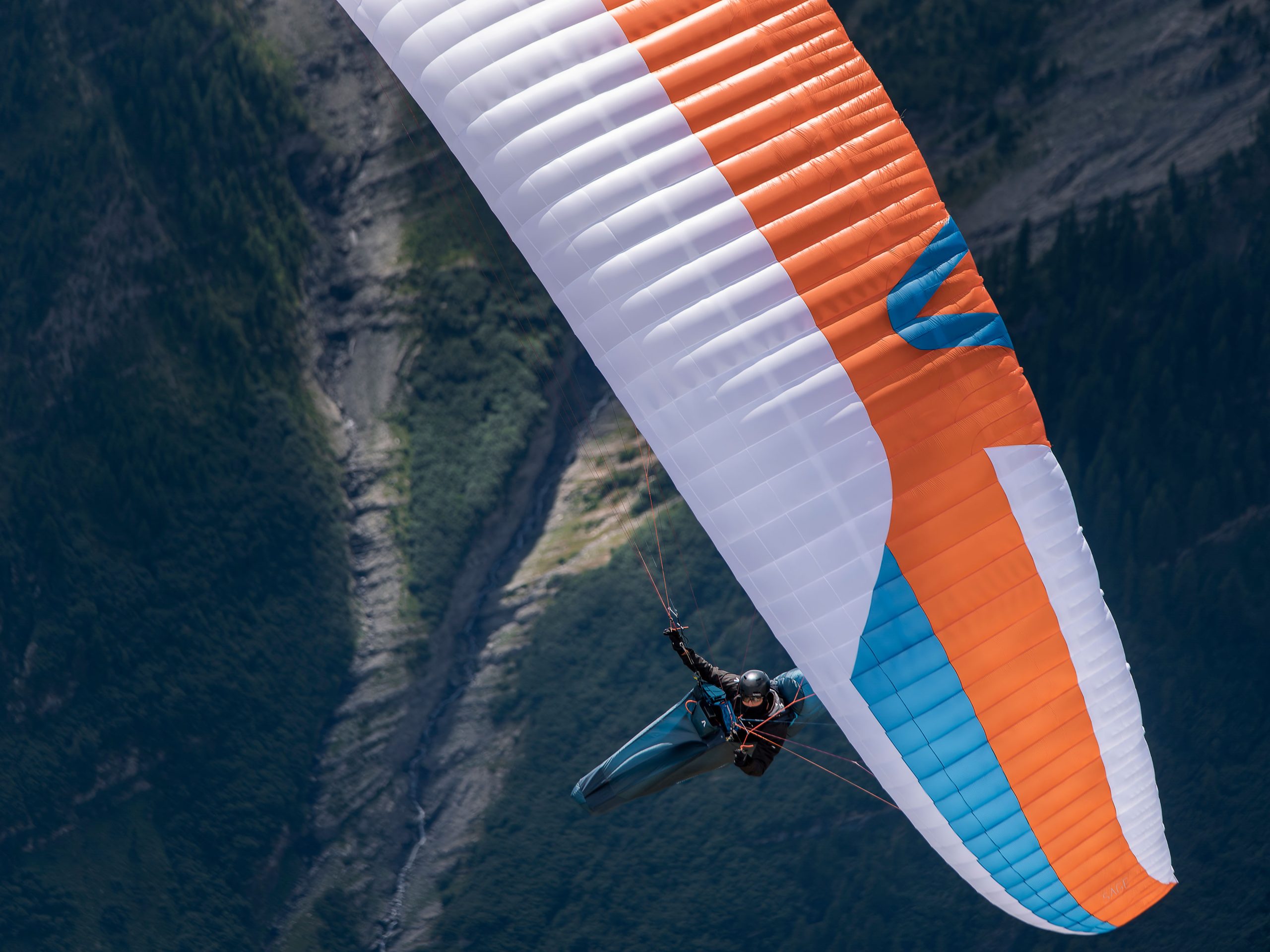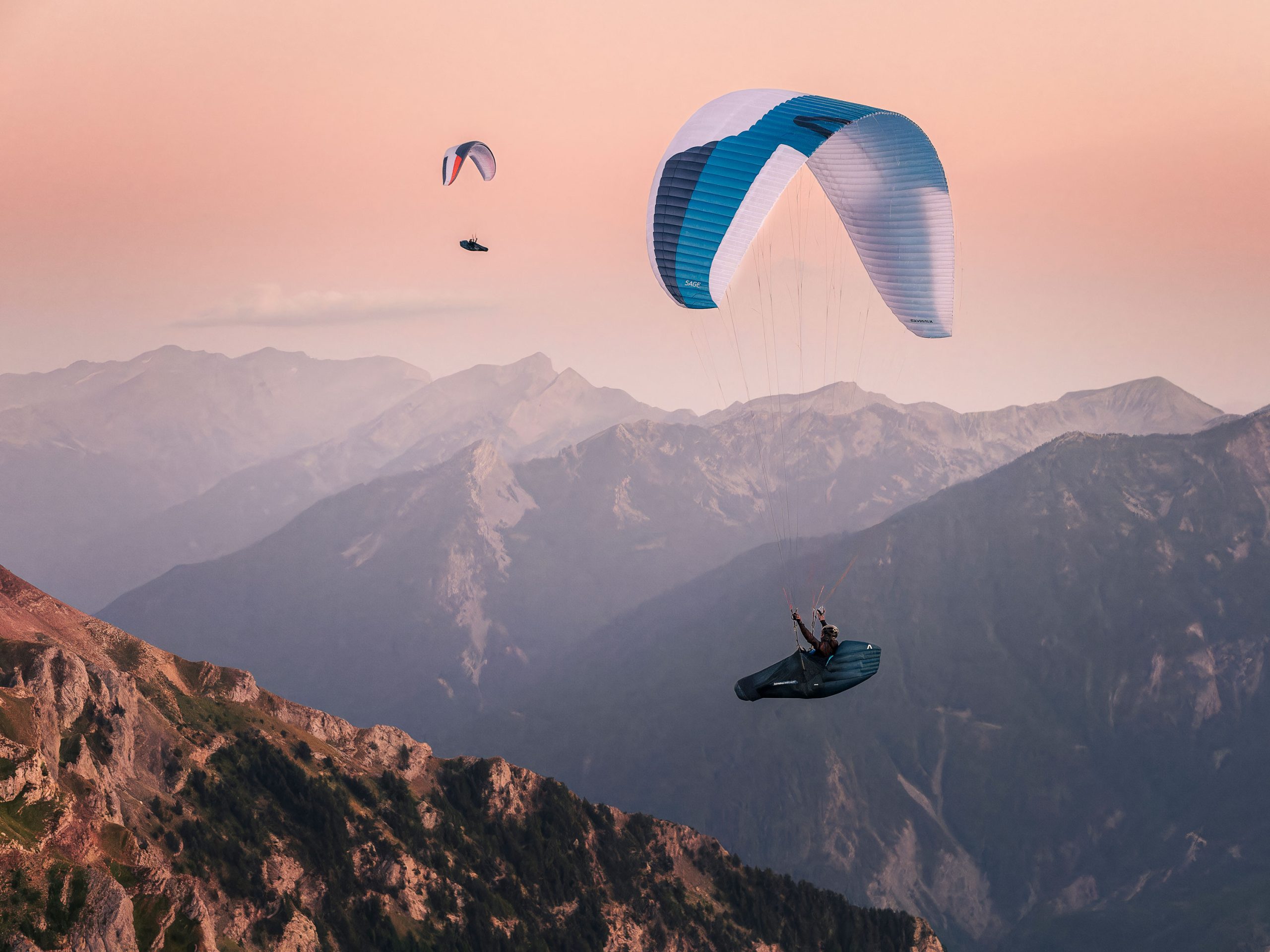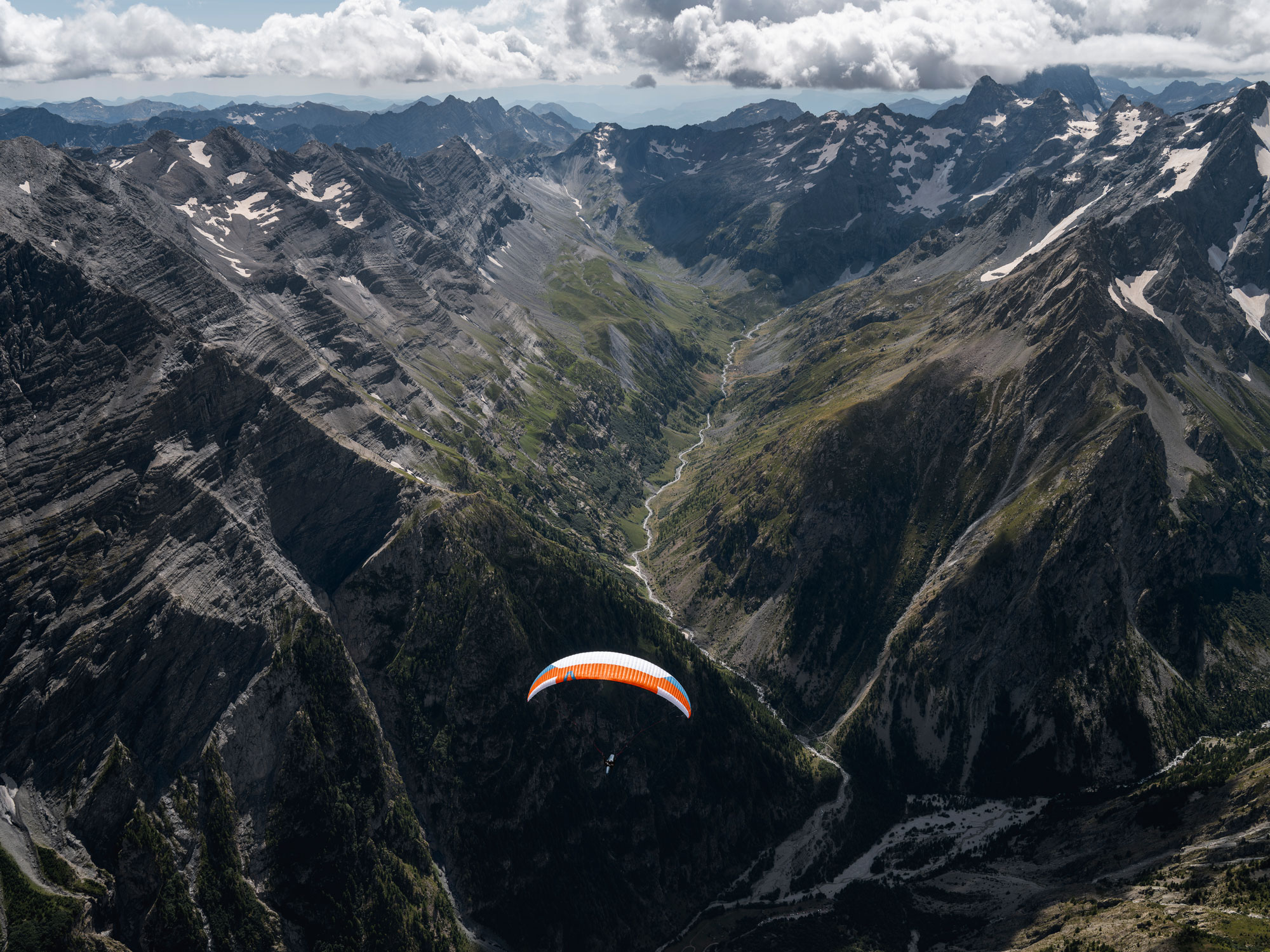Pour des aventures en cross.
Sans limites.
La SAGE est l’aile idéale pour les pilotes de cross expérimentés qui non seulement excellent sur les longues distances, mais qui souhaitent diversifier leur pratique que ce soit en Hike&Fly ou en Vol-Biv. Son design compact et sa technologie 2-lignes avancée créent l’équilibre parfait entre les caractéristiques de vol tolérantes des ailes de classe C et les performances impressionnantes des voiles de classe supérieure.
Pesant seulement 3,5 kg, la SAGE combine des performances exceptionnelles avec un grand confort de vol, ce qui en fait un compagnon fiable pour les aventures en montagne. Que ce soit dans les courses Hike&Fly, où son efficacité, sa maniabilité et sa sécurité s’harmonisent parfaitement, ou dans les nouvelles compétitions Sports-Class-Racing, la SAGE impressionne sur toute la ligne.
L’aile ultra-légère de classe Sport pour les pilotes qui recherchent l’extraordinaire.
L’aile ultra-légère de classe Sport pour les pilotes qui recherchent l’extraordinaire.
Caractéristique de vol
La SAGE offre aux pilotes des caractéristiques de décollage intuitives et faciles, idéales pour les terrains difficiles. Les élévateurs fins et anti-torsion de la SAGE, ainsi que la clarté du suspentage, permettent un démêlage facile au sol, raccourcissant considérablement les préparatifs de décollage. Avec une impulsion minimale, l’aile s’élève directement au-dessus du pilote, et prend en charge rapidement, ce qui est particulièrement avantageux sur les terrains piégeux.
En vol, la SAGE impressionne par sa maniabilité. La voile est très réactive aux commandes et, grâce à son allongement modéré, tourne sans effort. Cela lui confère un caractère ludique et vous permet de vous centrer facilement dans les thermiques turbulents – un bonus pour votre sécurité et un excellent confort de vol. Lors de longs vols planés, la SAGE reste sur sa trajectoire et ne se laisse pas facilement perturber. Elle vous donne toujours le retour d’information nécessaire sans être trop progressive.
Le système de pilotage aux B vous permet de contrôler confortablement l’angle d’attaque sur toute la plage de vitesse. Cela permet de voler sans fatigue et d’adopter un style de vol rapide et efficace, même lors de longs cross. Dans l’ensemble, la SAGE combine des performances exceptionnelles, la sécurité et un niveau élevé de plaisir de vol – idéal pour les pilotes qui recherchent un allié fiable dans la classe Sport.

DEUX LIGNES AVEC PILOTAGE AUX B
Réduit le nombre de suspentes et la traînée qui en résulte. Permet un style de vol rapide et efficace. Avantages: plus de performance, un contrôle total en vol accéléré et une meilleure vue d’ensemble au décollage.

SYSTÈME SMART LINK
Le code couleur des coutures des élévateurs permet de s’assurer qu’ils sont connectés correctement et sans être inversés ni vrillés.
Rouge = gauche ; bleu = droite

RIGID FOIL
Plastique souple dans le bord d‘attaque, poids total réduit, préforme le profil, meilleure répartition de la charge. Améliore le décollage et les performances en vol.

SHARK NOSE
Assure une pression d’air constante en conditions turbulentes et en vol accéléré; trainée réduite, meilleure pénétration et performances augmentées.

MINI RIBS
Alvéoles doublées dans le bord de fuite, profil plus stable, trainée réduite, performance augmentée.

3D-SHAPING
Renfort additionnel, tenue en forme plus précise, trainée réduite, performances augmentées.
| Taille | 75 | 85 | 95 | 105 | 115 |
| Nombre de cellules | 68 | 68 | 68 | 68 | 68 |
| Surface à plat (m²) | 20,26 | 21,38 | 22,70 | 24,20 | 25,67 |
| Surface projetée (m²) | 17,29 | 18,24 | 19,37 | 20,65 | 21,90 |
| Envergure à plat (m) | 11,34 | 11,65 | 12,01 | 12,40 | 12,77 |
| Envergure projetée (m) | 9,22 | 9,48 | 9,76 | 10,08 | 10,38 |
| Allongement à plat | 6,40 | 6,40 | 6,40 | 6,40 | 6,40 |
| Allongement projeté | 4,92 | 4,92 | 4,92 | 4,92 | 4,92 |
| Profondeur du profil min. (cm) | 54 | 56 | 58 | 59 | 61 |
| Profondeur du profil max. (cm) | 220 | 226 | 233 | 240 | 248 |
| Poids de la voile (kg) | 3,50 | 3,65 | 3,80 | 3,95 | 4,15 |
| PTV certifié (kg) | 55 - 75 | 65 - 85 | 75 - 95 | 85 - 105 | 95 - 115 |
| Homologation | EN/LTF C | EN/LTF C | EN/LTF C | EN/LTF C | EN/LTF C |
| Upper sail front | Dominico TX-Light |
| Upper sail back | Dominico 10D |
| Bottom sail | Dominico 10D |
| Profiles | Porcher Skytex 27 hard |
| Diagonals | Porcher Skytex 27 hard |
| Straps | Porcher Skytex 27 hard |
| Main lines | Edelrid 8001U - 340/190/130; Liros PPSLS 125 |
| Middle lines | Edelrid 8001U - 190/90/70/50; Liros DC 60 |
| Top lines | Liros DC 60, DC 35 |
| Main brake lines | Liros DFLP 200/32 |
| Middle brake lines | Liros PPSL 65; Edelrid 8001U - 50 |
| Top brake lines | Liros DC 35 |
| Risers | Cousin Freres 7mm webbing |
Quels sont les éléments à prendre en compte lors de l'utilisation de SAGE ?
La SAGE a été optimisée pour un poids léger en termes de conception et de mélange de matériaux. Afin de profiter de l’aile le plus longtemps possible et d’obtenir le maximum de performance, nous ne recommandons pas d’exposer l’aile à des charges mécaniques et à des manœuvres de vol extrêmes. En particulier, une 2-lignes perdra en performance lors de manœuvres de vol extrêmes récurrentes.
Quels sont les avantages du pilotage aux B ?
Le pilotage aux B est le plus grand avantage de la technologie 2-lignes Il permet un style de vol très efficace et rapide lors des accélérations. L’effort requis est largement inférieur à celui des ailes à trois lignes.
Que dois-je prendre en compte avec le pilotage aux B ?
En général, le contrôle via les élévateurs B ne peut pas remplacer le frein, c’est pourquoi nous recommandons d’utiliser le pilotage aux B uniquement en vol accéléré. Vous pouvez également piloter aux B bras hauts. Il faut cependant veiller à ne donner que des impulsions courtes et correctrices, sinon il y a un risque de décrochage de l’aile en raison de fortes sollicitations !
Les joncs nécessitent-ils une attention particulière ou une méthode de pliage spécifique ?
En raison de la rigidité des joncs, il faut veiller, lors du pliage, à ce que les joncs ne se plient pas, ne se déforment pas et ne se tordent pas. Nous recommandons donc d’utiliser le SOFTBAG et le tube de pliage fournis.
Vous trouverez les instructions de pliage recommandées dans le PRO GUIDE ou dans la vidéo.
Ce n’est qu’avec un pliage soigné que la SAGE conservera ses performances maximales et conservera ses qualités sur le long terme. Si la SAGE n’est pas utilisée pendant une longue période, nous recommandons de la ranger dans le SOFTBAG dans le sens de la longueur et de ne pas la plier.
La détérioration des voiles légères est-elle plus importante que celle d'une voile classique ?
Les voiles légères sont plus fines que les voiles de parapente classiques et sont donc moins résistantes aux contraintes mécaniques. Cela signifie que vous devez faire plus attention aux petits rochers et aux buissons. Veuillez éviter tout contact inutile avec le sol. En respectant scrupuleusement ces consignes, vous obtiendrez la même durabilité qu’avec une voile de parapente classique.
Après combien d'heures de vol la SAGE doit-elle être calée ?
Dans la catégorie deux lignes, les calages ont un effet plus important sur les performances de vol. Comme le calage est plus important au début, nous recommandons de le vérifier après les 25 premières heures de vol. Par la suite, cela dépend de l’attention que vous lui portez, de la fréquence de vos vols et de l’endroit où vous volez. En règle générale, nous recommandons de vérifier le calage au moins une fois par an.
Quelles sont les finesses, les vitesses bras hauts et accélérées maximales ?
Nous savons que ces données sont intéressantes pour vous en tant que pilote, mais nous choisissons de ne pas les publier pour les raisons suivantes :
1) Les données de performance dépendent fortement de la traînée du pilote et sont donc liées à sa position dans sa sellette. La différence entre des sellettes et des positions assises favorables ou défavorables d’un point de vue aérodynamique peut jouer sur la finesse finale.
2) La performance augmente selon la taille du parapente. Une grande taille de parapente sera toujours plus performante que le même modèle dans une taille plus petite. Ainsi, une question sur les performances d’un parapente est toujours une question de taille.
3) Il n’y a pas de méthode normalisée pour tester les performances des parapentes. Par exemple, la vitesse varie avec l’altitude et les différentes pressions atmosphériques associées, mais aussi avec le poids total.
Cela signifie qu’il n’y a tout simplement pas la vitesse ou la finesse qui permettrait une comparaison sérieuse avec une autre voile. Les données de performance dépendent de la sellette, de la taille de la voile, de la masse d’air et du poids total.
Puis-je faire des grandes oreilles sur la SAGE ?
Oui, il est possible de faire des grandes oreilles par la suspente basse BIII. Vous trouverez des instructions détaillées dans le PRO GUIDE.
Puis-je simuler des fermetures avec la SAGE ?
La SAGE a été certifiée avec des suspentes de pliage ajoutées spécifiquement. Les fermetures latérales et frontales simulées en tirant sur les élévateurs A ne sont donc pas possibles. Les lignes de pliage sont absolument nécessaires pour la simulation des fermetures. Le jeu de suspentes de pliage ne fait pas partie de la livraison et peut être commandé avec les instructions d’installation auprès de votre revendeur skywalk.
Comment calculer mon PTV ?
Le PTV est calculé en ajoutant le poids du pilote, vêtements compris, au poids de l’équipement. L’équipement est composé de la sellette, du parachute de secours, du parapente lui-même, des instruments de vol et des autres équipements que vous pouvez porter (ex. sac à dos, etc.).
Est-ce que je peux raccourcir les suspentes de frein de ma voile skywalk ?
Changer la longueur des suspentes de frein peut avoir un effet négatif sur les caractéristiques de vol et le comportement en vol extrême. Le parapente a besoin d’un peu plus de garde lors de vol accéléré, sinon le parapente pourrait être freiné involontairement, ce qui entraînerait une perte de performance. Lors de manœuvres de vol extrêmes, raccourcir trop les suspentes de frein peut entraîner des complications lors de la récupération après une fermeture, un décrochage parachutal, etc.
Ai-je le droit d'apporter des modifications à ma voile skywalk ?
Non, car le parapente est certifié tel qu’il vous est livré. Rien ne doit être modifié.
Votre pack SAGE
-
- 1x SOFTBAG
- 1x Packing Tube
- 1x Basic Guide
- 1x Bandana
- 1x Voiles adhésives


